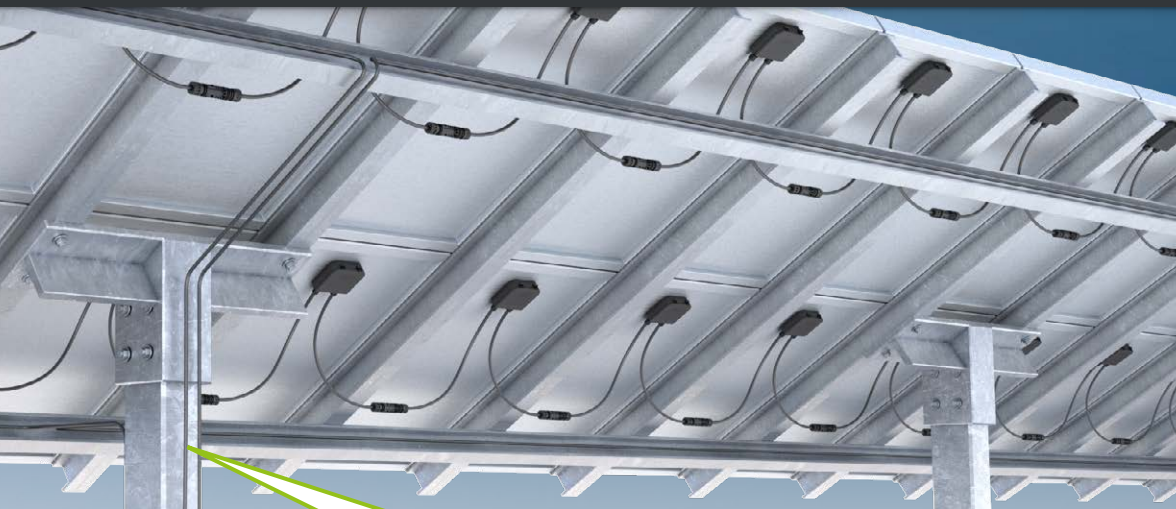The size of the solar power market in India to grow at a robust CAGR of 34.24% during the period 2022-27, witnessing a surge of $273.82 billion . The projection comes when the country is increasingly investing in expanding its transmission and distribution network, prompting an uptake in solar wires and cable manufacturing.
Notably, solar panels harness, store, and convert solar energy into the form of usable electricity. However, they depend on solar wires and cables to transmit energy to the electric unit. The crucial application has prompted solar cable manufacturers to level up their products to support efficient solar energy transmission.
Importance of high-quality solar wires and cables
Solar cables are vital for the functioning of solar panels and photovoltaic systems. They transmit power from the panels to the solar inverter, battery, and all crucial components of the system, which helps convert the DC current to AC current.
The primary role of solar cable is rooted in its ability to transfer electrical energy safely while maintaining the photovoltaic system’s stability. However, using poor-quality cables and improperly installed cables can hamper overall efficiency. Such a glitch reduces energy efficiency, causes overheating, creates durability issues, and may start fires.
To address such issues, leading solar cable companies are procuring high-end equipment and processing technology to enhance their product range. For instance, many industry leaders have adopted e-beam process technology, using specialized compounding solutions for insulation, and investing in premium raw materials to produce high-quality cables. In addition, they are conducting rigorous testing on frequent basis to ensure the product they develop meets safety standards.
Types of solar wires and cables
Today, several types of cables are available in the solar industry. Some of the most widely used ones include the following:
Photovoltaic cables: These cables help connect the photovoltaic panels to the solar system inverter. The photovoltaic cables can withstand UV radiation and harsh weather conditions, enabling them to resist sudden temperature fluctuations and ensure high electrical conductivity.
AC cables: This type of solar cable connects the system inverter to its protection equipment and electrical panel, eventually helping in the safe supply of energy to households. The AC solar cables are typically flame-retardant and heat-resistant, which ensures a smooth and efficient flow of alternating current between the connected devices.
DC cables. DC solar cables act as interconnect cables for advanced solar panels and PV arrays in power grids, as they help transmit DC solar energy via photovoltaic panels to the system inverter and battery. These cables are known for their high mechanical strength and temperature resistance, making them suitable for solar energy systems.
Ground cables. Ground cables offer an electrical ground to an advanced solar energy system. These wires are thoughtfully crafted to ensure safe energy discharge in case of a faulty system.
Key considerations
While the options are many, selecting the right kind of solar wires and cables is essential to ensure the smooth functioning of the energy system. Companies and concerned entities can make an informed decision regarding their preferred type of solar cables by keeping a few factors in mind:
Voltage and amperage. It is recommended to pick solar cables with voltage and amperage ratings that meet the specifications of a preferred solar energy system. Taking this factor into consideration will help ensure safe and smooth energy transmission.
Quality. Solar cables made with high-quality material tend to be more durable and resistant to harsh external conditions, including fire, UV radiation, oil, and chemicals. To further ensure performance efficiency, individuals should look for solar wires and cables that adhere to international standards and are made using the e-beam cross-linking process. Such an advanced process ensures that the products are more durable and have high chemical resistance and material strength. This assurance makes the e-beam cross-linked cables more uniform, safe, and reliable.
Safety standards and codes. When looking for safe and efficient solar wires and cables, one should prioritize products that meet the established safety standards for energy transmission. It is suggested to get products compliant with national and international standards like the EN and IS standards to ensure the highest level of reliability and wider acceptance.
The solar industry growth has accelerated the demand for wires and cables in India. Since solar cables are key in transmitting power from the photovoltaic panels to the system, it is essential to invest in the best-suited type of solar cable that meets stability and safety norms. Voltage and amperage, quality and safety standards, and cable life are the key factors to consider. Last but not least, proper installation is also important for the safe and efficient operation of their advanced solar panels and photovoltaic solar systems.
The views and opinions expressed in this article are the author’s own, and do not necessarily reflect those held by pv magazine.
This content is protected by copyright and may not be reused. If you want to cooperate with us and would like to reuse some of our content, please contact: editors@pv-magazine.com.








Sir /Madam
Good day!
We are sourcing and offering various commodities, products investment opportunities for our clients and agent network on the Planet.
In our conversation with our customer they advised us to look for a long term supplier who will be supplying their company monthly under O/A 60net day (open account) through export insurance company.
Below are the product interested
Solar cables
Kindly let us know if it’s workable in your company such that we can send you customer company details and their product specification for you to proceed.
Waiting for your quick response
—
Best Regard